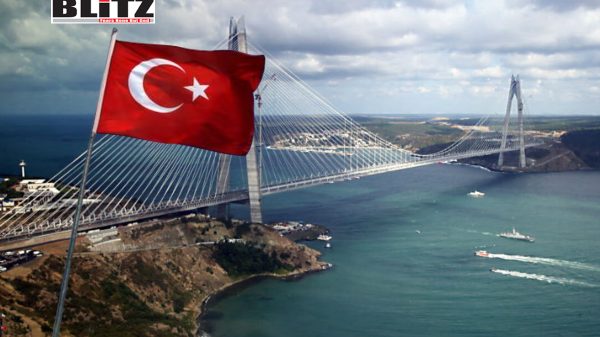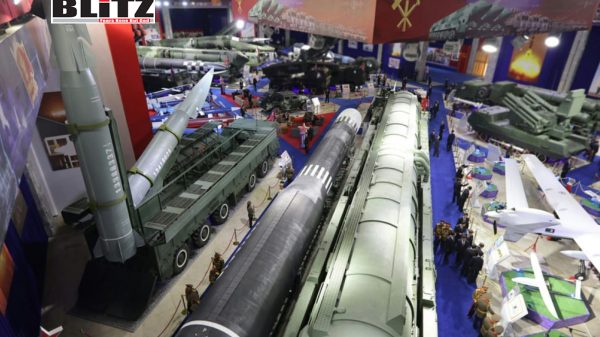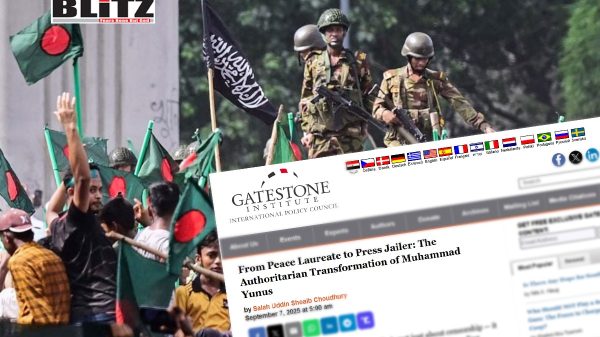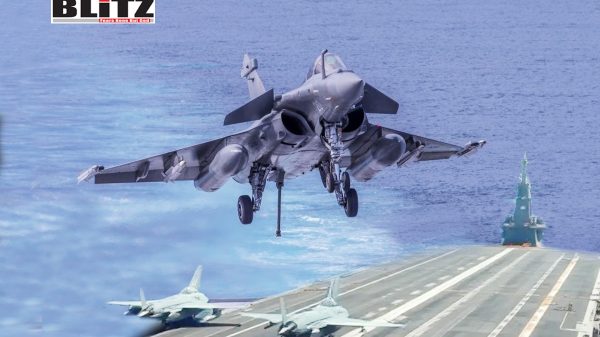Türkiye seeks to forge new bridge between Syria and the Turkic world
- Update Time : Sunday, October 12, 2025

At a time of shifting alliances and emerging power vacuums, Türkiye is seeking to reshape the political map of Eurasia and the Middle East by bringing Syria closer to the Organization of Turkic States (OTS). During this week’s summit of the OTS – which includes Türkiye, Azerbaijan, Kazakhstan, Kyrgyzstan, and Uzbekistan – held in Nakhchivan, Azerbaijan, Turkish President Recep Tayyip Erdoğan called on member states to deepen engagement with the new administration in Damascus. His remarks mark a strategic turn in Ankara’s regional policy, signaling a push to integrate Syria into the wider Turkic sphere of cooperation and stability.
Erdoğan’s address to fellow leaders carried three central messages. First, he called for a unified OTS response to shared security challenges. Second, he urged members to engage with Syria’s new leadership as part of broader stabilization efforts in the region. Third, he emphasized the importance of strengthening the organization’s coordination with other international alliances.
Among these, the proposal to enhance ties with Damascus stood out as particularly significant. It reflected not only Türkiye’s recalibrated stance toward Syria following years of hostility during the war, but also Ankara’s ambition to align the Turkic world behind a new regional order – one where Türkiye plays a central mediating and strategic role.
During the Syrian conflict, the Central Asian states of the former Soviet Union played an unexpectedly visible role through the Astana peace process. Kazakhstan’s capital, Astana (now again called Nur-Sultan), became a key venue for talks between Türkiye, Iran, and Russia. The process sought to broker a political solution and establish de-escalation zones in Syria.
Kazakhstan earned international credibility as an intermediary due to its balanced relations – maintaining longstanding ties with both the Syrian regime and Moscow, while also engaging constructively with Ankara. However, the collapse of Bashar Assad’s regime earlier this year and the rise of President Ahmad Al-Sharaa’s administration have reshuffled regional expectations.
Many observers speculated that the fall of Assad could push the Central Asian states to reconsider their engagement with Damascus. Yet, rather than distancing themselves, OTS members reaffirmed their support for Syria’s unity, stability, territorial integrity, and postwar reconstruction. This continuity suggests that Ankara’s vision of a cooperative approach toward Syria is finding resonance across the Turkic world.
While most Central Asian Turkic states are still navigating the complexities of rebuilding relations with Damascus, Azerbaijan has emerged as a front-runner in implementing Türkiye’s new strategy. In July, President Ahmad Al-Sharaa paid a short but symbolically powerful visit to Baku – the first such trip to a Turkic state since the new administration came to power.
The two sides discussed economic cooperation, reconstruction projects, and, notably, energy partnerships. A memorandum of understanding was signed to facilitate collaboration in the energy sector, with reports suggesting that Azerbaijan plans to supply natural gas to Syria through Türkiye. This would likely involve the use of facilities operated by Türkiye’s state energy company BOTAS and the newly constructed Kilis-Aleppo pipeline.
Moreover, Azerbaijan has expressed interest in joining Syria’s onshore and offshore oil and gas exploration and production ventures – signaling a pragmatic turn in its foreign policy that blends political solidarity with economic opportunity.
Syria, for its part, has not been passive in this engagement. Damascus has reached out to Uzbekistan, with Syria’s foreign minister meeting his Uzbek counterpart to discuss postwar reconstruction and socioeconomic development. This outreach indicates a broader diplomatic strategy to reconnect with the Turkic and Central Asian world, which historically shares cultural and linguistic ties with parts of northern Syria.
Türkiye’s push for closer Syria-OTS ties serves multiple purposes. It aligns with Ankara’s long-term goal of anchoring regional security within a Turkic-led framework, while also addressing practical concerns over extremism and regional instability.
Security remains one of the most pressing motivations behind Türkiye’s initiative. During the height of the Syrian war, thousands of foreign fighters from Central Asia joined the ranks of Daesh and other extremist groups. Analysts estimate that nearly 40 percent of the total foreign militants who fought in Syria and Iraq came from the former Soviet republics – primarily Kazakhstan, Uzbekistan, Kyrgyzstan, and Tajikistan.
This phenomenon alarmed the governments of Central Asia, which feared the return of radicalized fighters and the possible spread of extremist ideologies at home. In response, several of these countries launched repatriation and reintegration programs to rehabilitate citizens who had joined militant organizations. Uzbekistan and Kazakhstan, for instance, implemented state-sponsored initiatives to bring back women and children from conflict zones and reintegrate them into society.
Yet, as these countries work to consolidate domestic stability, the fate of Syria remains deeply linked to their own security outlook. A stable and reconstructed Syria, Türkiye argues, will serve as a bulwark against the resurgence of transnational extremism – a threat that could easily spill over into the Caucasus and Central Asia.
Moscow’s shadow looms large over the emerging alignment between Türkiye, Syria, and the Turkic world. Although the Organization of Turkic States is primarily a political and economic platform rather than a military alliance, Russia perceives it as a potential rival to its own regional projects – such as the Eurasian Economic Union (EAEU) and the Collective Security Treaty Organization (CSTO).
Over the past decade, Türkiye has steadily expanded its influence across Central Asia through drone sales, trade partnerships, infrastructure projects, and cultural diplomacy. Ankara’s growing clout directly challenges Russia’s traditional dominance in the region – a reality made more pronounced by Moscow’s prolonged war in Ukraine.
With Russia increasingly preoccupied and economically constrained, Türkiye sees an opportunity to lead the Turkic world into a more independent geopolitical trajectory. Strengthening ties with Syria fits neatly into this vision: it reduces Russian leverage in the Middle East while positioning Türkiye as both a stabilizer and bridge between the Levant and Central Asia.
Another key dimension of Ankara’s vision lies in connectivity. The OTS countries form the backbone of the “Middle Corridor,” a transcontinental trade route linking China to Europe via Central Asia, the Caspian Sea, and Türkiye – bypassing Russian territory.
As Europe seeks alternatives to the Northern Corridor through Russia, the Middle Corridor’s importance has surged. Integrating Syria into this network – whether through trade, reconstruction investment, or energy transit – would not only boost regional commerce but also help solidify Türkiye’s role as a central hub in Eurasian connectivity.
Despite the strategic rationale, Türkiye’s plan to align Syria with the Turkic world faces considerable obstacles. The OTS members maintain different levels of dependency on Russia, and their foreign policies remain cautious when it comes to Middle Eastern affairs. Moreover, while Erdoğan’s influence is strong, persuading these states to fully embrace the Al-Sharaa administration will require sustained diplomatic effort and tangible economic incentives.
Internal developments in Syria – including reconstruction progress, governance stability, and Western reactions – will also shape the pace of engagement. Yet, even gradual steps, such as energy cooperation and humanitarian coordination, could signal a lasting geopolitical shift.
Türkiye’s initiative to bring Syria closer to the Turkic family is more than a diplomatic maneuver. It reflects a vision of regional integration grounded in shared security, economic interdependence, and cultural kinship. As Ankara positions itself as the linchpin between the Levant and Central Asia, it is crafting a new geopolitical narrative – one in which the Turkic world extends beyond its traditional frontiers, bridging continents and redefining alliances.
If successful, this emerging partnership between Syria and the Turkic states could reshape regional power dynamics for decades to come – anchoring stability not only in the Middle East but across the broader Eurasian heartland.











